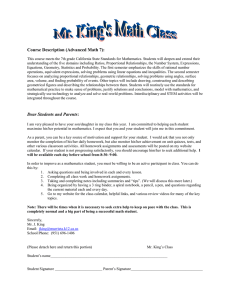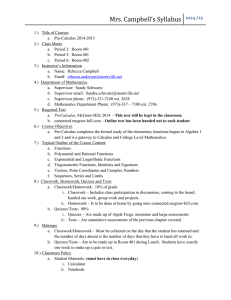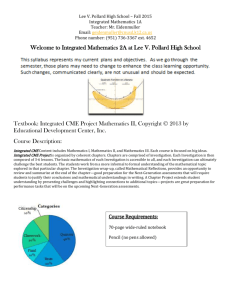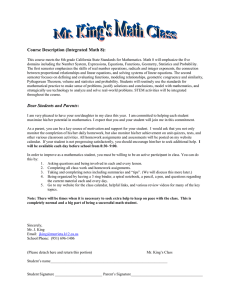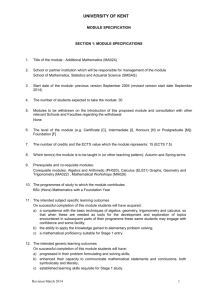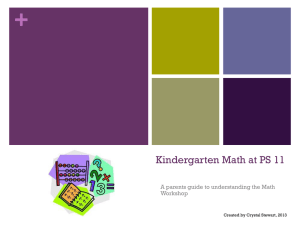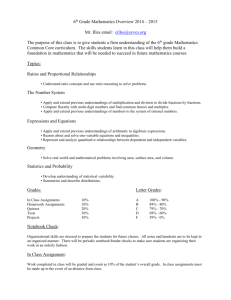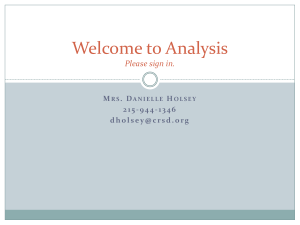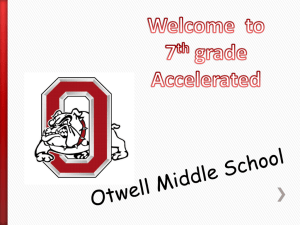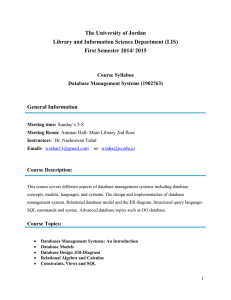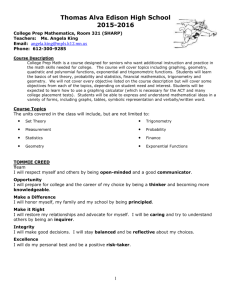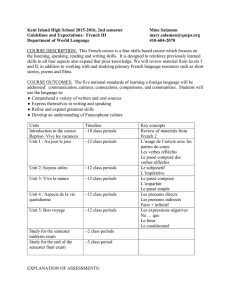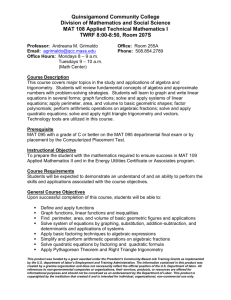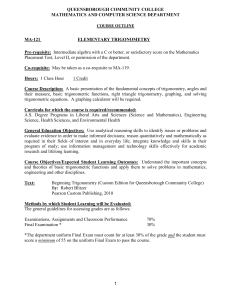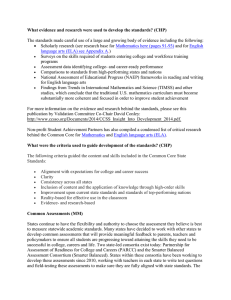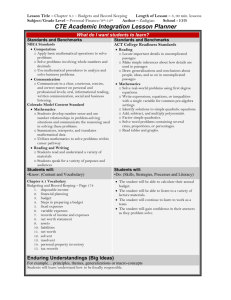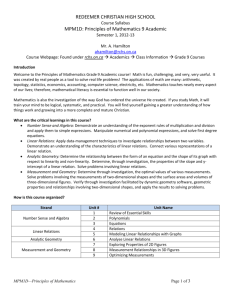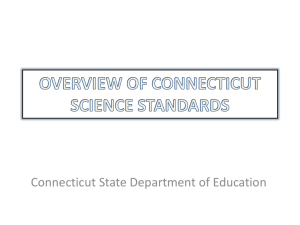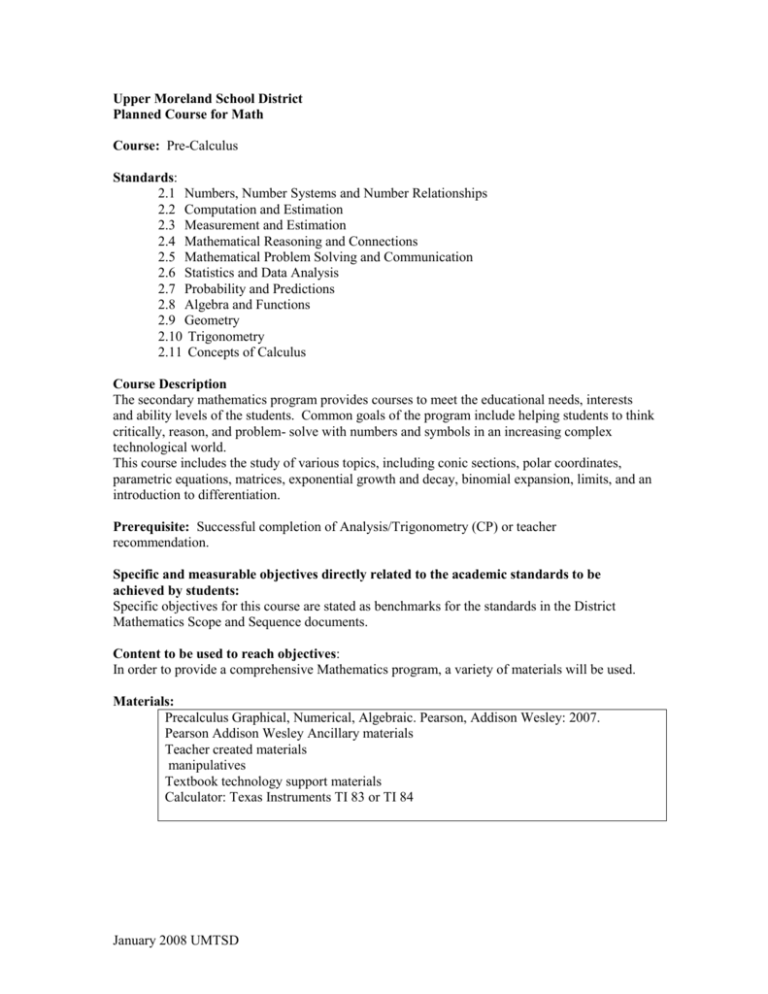
Upper Moreland School District
Planned Course for Math
Course: Pre-Calculus
Standards:
2.1 Numbers, Number Systems and Number Relationships
2.2 Computation and Estimation
2.3 Measurement and Estimation
2.4 Mathematical Reasoning and Connections
2.5 Mathematical Problem Solving and Communication
2.6 Statistics and Data Analysis
2.7 Probability and Predictions
2.8 Algebra and Functions
2.9 Geometry
2.10 Trigonometry
2.11 Concepts of Calculus
Course Description
The secondary mathematics program provides courses to meet the educational needs, interests
and ability levels of the students. Common goals of the program include helping students to think
critically, reason, and problem- solve with numbers and symbols in an increasing complex
technological world.
This course includes the study of various topics, including conic sections, polar coordinates,
parametric equations, matrices, exponential growth and decay, binomial expansion, limits, and an
introduction to differentiation.
Prerequisite: Successful completion of Analysis/Trigonometry (CP) or teacher
recommendation.
Specific and measurable objectives directly related to the academic standards to be
achieved by students:
Specific objectives for this course are stated as benchmarks for the standards in the District
Mathematics Scope and Sequence documents.
Content to be used to reach objectives:
In order to provide a comprehensive Mathematics program, a variety of materials will be used.
Materials:
Precalculus Graphical, Numerical, Algebraic. Pearson, Addison Wesley: 2007.
Pearson Addison Wesley Ancillary materials
Teacher created materials
manipulatives
Textbook technology support materials
Calculator: Texas Instruments TI 83 or TI 84
January 2008 UMTSD
Instructional Activities:
A balanced mathematics program demands the use of a variety of activities to stimulate thinking,
conceptualizing, generalizing and problem-solving. Below is a list of those different activities.
Direct instruction
Cooperative learning
Problem-solving
Using current technology
Teaching to a variety of learning styles
Asking higher level and thought provoking questions
Self/Peer Evaluations
Explorations
Recognizing and describing patterns
Connection and application of math to other subjects and to the real world
Estimated instructional time to be devoted to achieving objectives:
180 days (45 minutes per day)
Procedure for measurement of student progress on the objective:
Teachers use a variety of assessments to determine student progress. They include a variety of
assignment which may include tests, quizzes, homework, classwork and other performance
assessments.
An explanation of how student grades will be determined:
Students will be evaluated in the areas of classwork, homework, class participation, tests, quizzes
and other performance assessments. Point values will be given for each assignment. Grades will
be determined by at least five assignments per marking period.
January 2008 UMTSD

